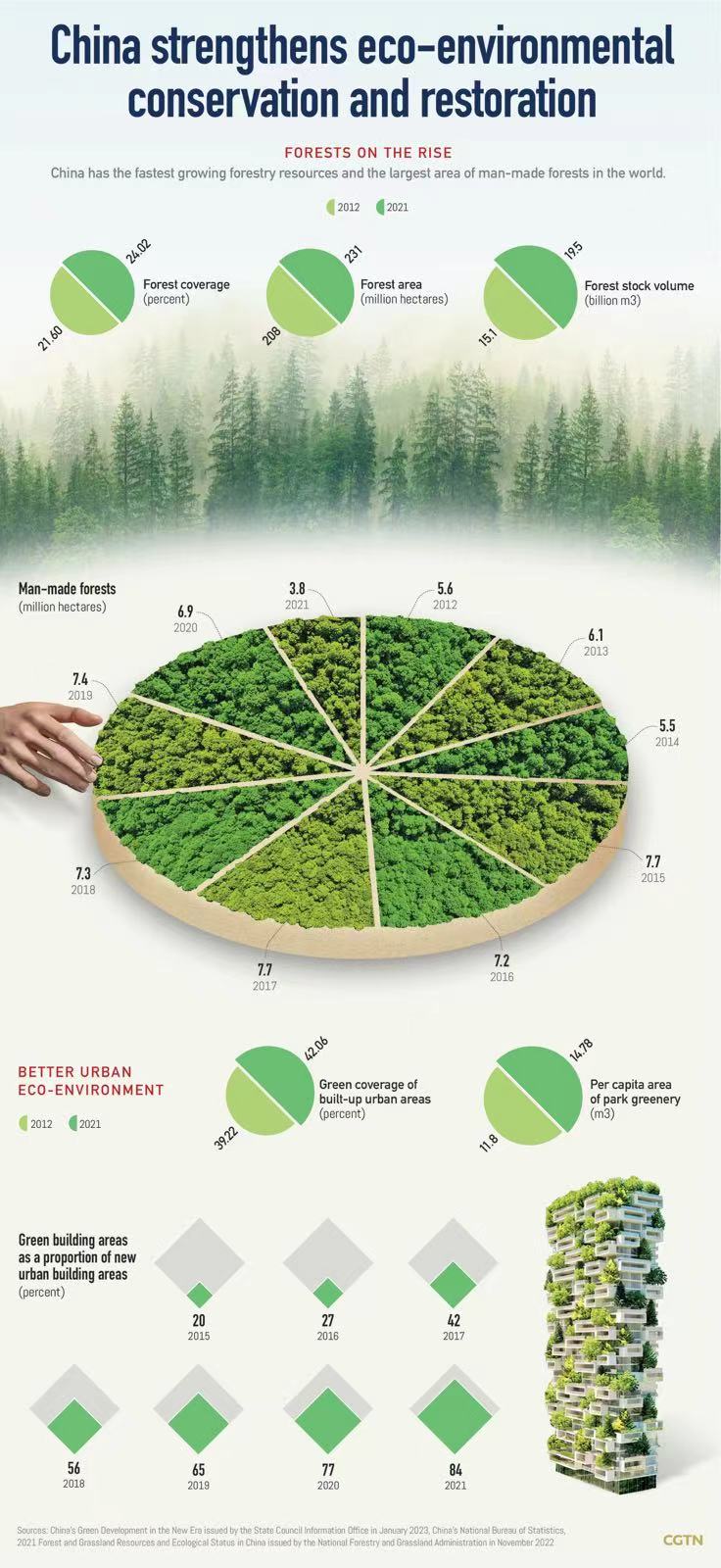
At the National Conference on Eco-environmental Protection held in May 2018, Chinese President Xi Jinping proposed six principles for building eco-civilization in China. In the past five years, China has made great efforts to improve the quality of the human living environment.
Green symbolizes life and nature. A new type of protected area (PA) system has been set up. PAs are major platforms for eco-environmental conservation. China is developing a PA system with national parks as the mainstay, supported by nature reserves and supplemented by nature parks. It has created its first batch of five national parks – the Three-River-Source National Park, the Giant Panda National Park, the Northeast China Tiger and Leopard National Park, Hainan Tropical Rainforest National Park, and Mt. Wuyi National Park. It is making steady progress in building national parks in environmentally important regions. As of the end of 2021, nearly 10,000 PAs of various types and levels had been established, covering more than 17 percent of China's land area, bringing under effective protection 90 percent of its natural terrestrial ecosystem types and 74 percent of key state-protected wildlife species.
China has placed great emphasis on urban eco-environmental conservation and adopted a people-centered approach to urbanization. It has made sound plans for spaces for working, living and eco-environmental conservation, and has worked to make cities livable, resilient and smart, so as to build cities into beautiful homes where humanity and nature coexist in harmony. During its urbanization, China respects and accommodates the requirements of nature, and has made use of mountains, waters, and other unique landscapes to integrate cities into nature, so that urban dwellers can enjoy the view and are reminded of their rural origins.
Efforts have been made to expand urban eco-environmental space through the construction of national garden cities and forest cities, as well as parks and greenways in urban areas. With increased greenery coverage, the urban eco-environment has been effectively restored. During 2012 and 2021, the green coverage of built-up urban areas increased from 39 percent to 42 percent, and the per capita area of park greenery increased from 11.8 square meters to 14.78 square meters. Great efforts have been made to construct green, low-carbon buildings, and renovation of existing ones has been promoted, contributing to increasingly higher energy efficiency.
From 2012 to 2021, 64 million hectares of trees were planted. During this period, desertification prevention and control was carried out over 18.53 million hectares of land, 40 million hectares of land were improved through sowing grass, and more than 800,000 hectares of wetland were added or restored. In 2021 alone, the forest coverage ratio hit 24 percent, while the forest stock volume grew to 19.5 billion cubic meters. Both figures represented 30 consecutive years of growth, making China a country with the highest growth in forest resources and the largest area of man-made forest. China is also the first to realize zero net land degradation – its desertified and dandified areas are both shrinking, thus helping the world to reach the global goal of zero net land degradation in 2030. Since 2000, China has led the world in greening the planet, contributing some one-fourth of the newly added green areas in the world.
Lucid waters and lush mountains are invaluable assets. This is an important concept for development in the new era and a major principle behind China's modernization drive.
(If you want to contribute and have specific expertise, please contact us at nature@cgtn.com.)